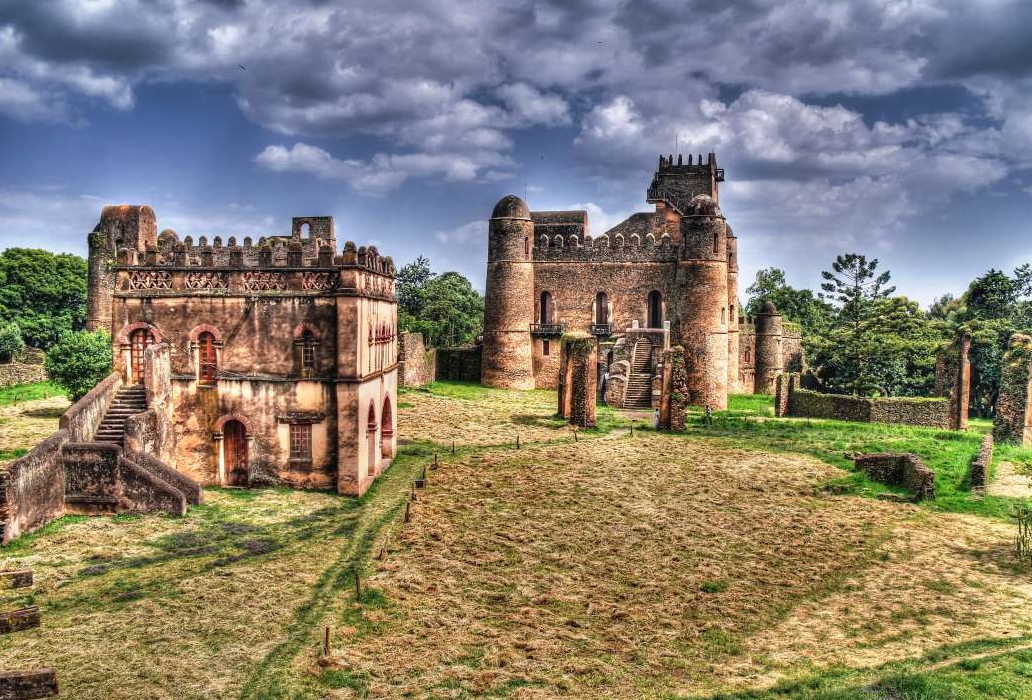
In the mid-1950s, the shallow Olduvai Gorge was discovered 40 km west of the Ngorongoro Crater, formed by an ancient river eroding layers of rock. In 1959, anthropologists unearthed a 1.25 million-year-old Australopithecine skull here. In 1960, 1.9 million years old fossil remains of Homo habilis, stone tools, and fossils of distant ancestors of animals still hunted were unearthed. These findings are of great value to the current complex and controversial study of ethnogenealogy.
Ruaha National Park is one of Tanzania's most mysterious wildlife parks, located in central Tanzania, about 130 km from Iringa. Covering 10,300 square kilometres, the park is the largest elephant habitat in Tanzania and combines spectacular wilderness scenes, peaceful wildlife landscapes and breathtaking beauty.
Ruaha National Park gets its name from the Great Ruaha River, which flows along the eastern boundary of the park and forms the spectacular Grand Canyon. The Great Ruaha River eventually flows into the Rufiki River, where rhinos and crocodiles live. Oryx, young reeds, and buffalo often venture near the river to drink, attracting the attention of lions, cheetahs, coyotes, jackals, and jackals. The park also has a runway for small aircraft on the west bank of the river.
Most of the park is situated 900 metres above ground, where hills, valleys and plains undulate, making the terrain unique for wildlife viewing. Due to its remote location, much of the park remains undeveloped.
Because of this, safari trips to this national park often have the feel of an intimate adventure and a unique experience.
For intrepid wilderness lovers and avid safari seekers, a trip to Ruaha National Park will be unique and the perfect African experience for them.
Top 10 tourist attractions in Tanzania - Zitulo National Park is not only a paradise for botanists and hikers, it also attracts many bird watchers. Tanzania's only rare population of Den Bustard lives here, as do breeding grounds for the endangered green swallow, as well as highly endemic mountain marsh wrens, Nchung warbler and Chippongori seed finches.
Zitulo National Park is an alpine grassland and montane forest reserve located in the southern highlands of Tanzania, covering an area of 412.9 square kilometers, one part in the Mbaya region and the other part in the Iringa region, the reserve mainly includes the Zitulo Plateau and the nearby Livingston Forest.
Locals refer to the Zitulo Plateau as Bustani ya Mungu, or God's garden, and botanists call it the flower of the Serengeti, "one of the great botanical landscapes of the world." As one of the important watersheds of the Roha River, Zitulo is known for its rich vegetation, not only orchids, but also the astonishing yellow and orange torch lilies and a variety of garoupa, geranium, mountain peduncula, lily and emerald flowers, more than 30 of which are native to southern Tanzania. Large animals are uncommon, but a few small reeds and gemsbok roam the open meadows.
Rubundo Island National Park covers an area of 240 square kilometers, located in southwest Tanzania, in the southwest corner of the world's second largest lake, Lake Victoria, 150 kilometers west of Mwanza.
Rubondo is a watery wonderland, a barren sand sea connected with virgin forest, a maze of tamarind, palm, tiny FIG trees and FIG trees, through which spotted antelopes run fast but silently.
The shaggy aquatic antelope, which is the least visible antelope anywhere else, is ubiquitous here. Birds can also be seen everywhere, malachite kingfisher shining sky blue, perched in the reed low, very attractive, as it skimmed the lake shore, you can see the swallow-like tail. Herons, storks, spoonbills that breed along the lake, and thousands of Eurasian migratory birds flock here during the northern winter.
90% of the park is wet forest, with the rest ranging from open grassland to papyri beds. Wild jasmines and 40 species of orchids compete with each other, emitting a mixed fragrance that permeates the forest.
In addition to native mammals such as hippos, African savanna monkeys, civets and meerkats, there are also introduced species such as chimpanzees, black and white colobus monkeys, elephants and giraffes, so all animals can live safely in Lubondo.
Top 10 tourist attractions in Tanzania - Gombe River National Park is Tanzania's smallest national park, a long, narrow strip where chimpanzees are often seen standing on steep slopes and in low-lying river valleys.
Gombe River National Park is Tanzania's smallest national park, covering just 52 square kilometers, a narrow strip of land where chimpanzees are often seen standing on steep slopes and in the low-lying river valley that is surrounded by the north shore of Lake Tanganyika.
Chimpanzees have long been accustomed to human visitors, and the chimpanzees who live here are famous for their work with Dr. Jane Goodall's pioneer team, which has been at the forefront of this research since the Behavioral Survey Program began in 1960.
Chimpanzees share 98 percent of their genes with humans, and in their screams for "friends and friends," it is natural to distinguish who is a celebrity, who is good at playing power, and who is a minor player.
Perhaps when you look into the eyes of a chimpanzee, you see a twinkle of understanding, and in turn, it is also examining you, and such an expression can even transcend the barrier of biology and convey recognition with humans.
The other most common mammals in Gombe River National Park are primates, which have been studied since the 1960s.
Olive baboons are the most common and often roam the seashore in large groups, while red-tailed monkeys and colobus monkeys have long used the forest as a natural canopy, and colobus monkeys are often hunted by chimpanzees.

